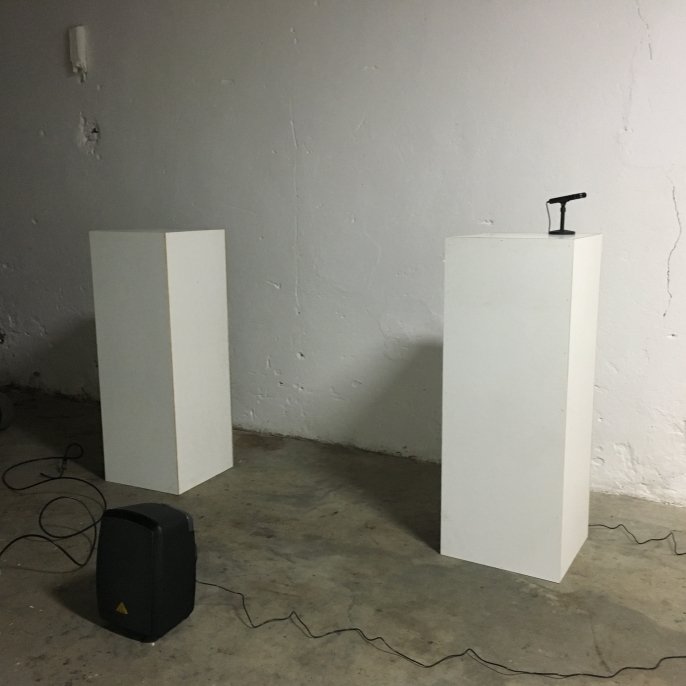Fine Arts Professorship: Specialization In Spatial Design And Theory

Table of Contents
Essential Qualifications for a Fine Arts Professorship in Spatial Design and Theory
Securing a Fine Arts Professorship specializing in Spatial Design and Theory requires a strong foundation of academic achievement, teaching experience, and professional engagement. The path to success is paved with dedication, research, and a proven commitment to the field.
Advanced Degrees and Research Experience
A terminal degree, such as a PhD or MFA, in a relevant discipline is paramount. This could include architecture, design, art history, or a closely related field with a focus on spatial theory. Your research experience must demonstrate a deep understanding of spatial design principles and theoretical frameworks.
- Publications: Peer-reviewed journal articles, book chapters, and conference proceedings showcasing your original research in spatial design theory.
- Presentations: Presentations at national and international conferences, demonstrating your expertise and engagement within the academic community.
- Grant Applications: A successful track record of securing research grants signifies your ability to secure funding and conduct independent research.
- Portfolio: A strong portfolio is crucial, highlighting your creative work and demonstrating your proficiency in spatial design principles and methodologies. This could include architectural models, digital renderings, and theoretical essays.
Teaching and Mentoring Experience
Proven teaching experience is critical. Demonstrate your ability to engage students effectively through various teaching methodologies. This could include experience as a teaching assistant, adjunct professor, or workshop instructor.
- Teaching Methodologies: Showcase your proficiency in various teaching approaches, such as lectures, studio critiques, project-based learning, and digital design instruction.
- Student Feedback: Positive student evaluations demonstrate your ability to create a supportive and stimulating learning environment.
- Mentorship Experiences: Document your experience mentoring students, providing guidance on research projects, and fostering their professional development.
- Communication Skills: Effective communication and interpersonal skills are crucial for working with diverse student populations and fostering collaborative learning environments.
Professional Network and Industry Connections
A strong professional network within the spatial design and theory community is invaluable. Demonstrate your active participation and engagement through affiliations and collaborations.
- Professional Affiliations: Membership in relevant professional organizations, such as the Association of Collegiate Schools of Architecture (ACSA) or similar design-focused organizations.
- Collaborations: Examples of successful collaborations with other professionals in the field, showcasing your ability to work effectively in a team environment.
- Industry Involvement: Participation in industry events, conferences, and workshops demonstrates your awareness of current trends and technological advancements in spatial design.
- Staying Current: Demonstrate your commitment to staying current with evolving design technologies and theoretical discussions within the field.
The Role and Responsibilities of a Spatial Design and Theory Professor
The role of a Spatial Design and Theory Professor extends far beyond teaching; it involves research, mentorship, and service to both the university and the profession.
Curriculum Development and Instruction
You will be responsible for developing and delivering engaging courses that cover the history, theory, and practice of spatial design. This will require creativity, pedagogical expertise, and a deep understanding of the subject matter.
- Course Topics: Examples include: History of Spatial Design, Design Theory, Digital Modeling in Architecture, Environmental Psychology, Sustainable Design Practices, Inclusive Design Strategies.
- Teaching Methods: Employ diverse teaching methods, including lectures, studio-based learning, critiques, group projects, and potentially online learning modules.
Research and Publication
Ongoing research and scholarly publications are crucial for maintaining credibility and advancing the field. Identify research areas of interest and actively pursue publication opportunities.
- Research Areas: Potential research topics include sustainable design, inclusive design, digital fabrication, the impact of technology on spatial design, and the intersection of spatial design with other disciplines.
- Publication Venues: Target high-impact journals, books, and conference proceedings to disseminate your research findings.
Mentorship and Student Advising
Mentoring and advising students is an integral part of the role. You will guide students in their academic pursuits, career development, and research projects.
- Advising Activities: Provide guidance on course selection, research projects, portfolio development, and career planning.
- Thesis Supervision: Supervise and mentor students undertaking advanced research projects or theses.
Service to the University and Profession
Contributing to the university community and the broader profession through service is expected.
- Committee Work: Participation in departmental, college, or university committees.
- Jury Service: Serving on juries for student projects or design competitions.
- Conferences: Participating in conferences and workshops to share knowledge and stay updated on current trends.
Career Prospects and Advancement for Fine Arts Professors
The job market for Fine Arts Professors specializing in Spatial Design and Theory is competitive but rewarding. Career advancement involves dedication, impactful research, and strong teaching performance.
Job Market and Salary Expectations
The job market for Fine Arts Professors varies depending on geographic location and institutional type. Salary expectations typically depend on experience, education, and the institution's resources. Researching salary data for similar positions at comparable institutions is essential.
Professional Development Opportunities
Continuous professional development is key. Seek opportunities to enhance your teaching skills, research capabilities, and leadership potential.
- Workshops: Attend workshops focused on teaching methodologies, research techniques, and leadership development.
- Conferences: Actively participate in conferences to stay updated on current trends and network with colleagues.
- Research Grants: Pursue research grants to fund your research projects and enhance your credentials.
- Leadership Roles: Seek opportunities for leadership roles within your department or university, such as department chair or program coordinator. Tenure track positions offer long-term career security and advancement opportunities.
Conclusion
This article has illuminated the multifaceted nature of a Fine Arts Professorship specializing in Spatial Design and Theory. Success in this demanding yet fulfilling career hinges on a powerful combination of advanced education, impactful research, exceptional teaching skills, and a genuine commitment to shaping the future of the field. The rewards are immense: the chance to make a tangible contribution to the advancement of spatial design, mentor aspiring designers, and leave a lasting legacy through research and teaching. If you're equipped with the necessary qualifications and a fervent passion for spatial design and theory, a Fine Arts Professorship could be your ideal career path. Start researching available Fine Arts Professorship positions and begin crafting a compelling application to embark on this intellectually stimulating and rewarding journey.

Featured Posts
-
 Entwarnung Grosseinsatz An Braunschweiger Grundschule Beendet
May 13, 2025
Entwarnung Grosseinsatz An Braunschweiger Grundschule Beendet
May 13, 2025 -
 Gerard Butlers Unexpected Netflix Success From Disaster To Streaming Sensation
May 13, 2025
Gerard Butlers Unexpected Netflix Success From Disaster To Streaming Sensation
May 13, 2025 -
 Eva Longorias Stunning Leopard Print Bikini
May 13, 2025
Eva Longorias Stunning Leopard Print Bikini
May 13, 2025 -
 De Meshkaye Naybilshe Romiv V Ukrayini Chiselnist Prichini Ta Detali
May 13, 2025
De Meshkaye Naybilshe Romiv V Ukrayini Chiselnist Prichini Ta Detali
May 13, 2025 -
 Reaktsiya Kostyuk Na Rukopozhatie S Kasatkinoy Posle Smeny Grazhdanstva
May 13, 2025
Reaktsiya Kostyuk Na Rukopozhatie S Kasatkinoy Posle Smeny Grazhdanstva
May 13, 2025
